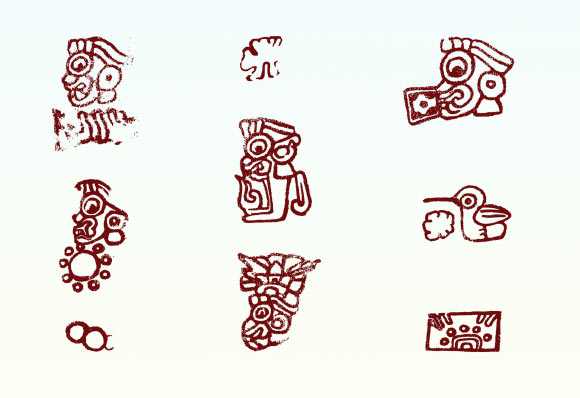The culture that flourished in Teotihuacan during the classical period occupies a unique place in the history of Mesoamerica. Today it is considered an emblem of Mexico's national past and is one of the most visited archaeological sites in the Americas. However, curious visitors are told that the ethnic and linguistic identity of the Teotihuacan people remains unknown. While deciphering other Mesoamerican writing systems has provided a wealth of information about dynasties and historical events, scholars have been unable to access information about Teotihuacan society from their own written sources. Indeed, the subject of the Teotihuacan letter raises several controversial issues. Are the signs in the images of Teotihuacan writing? If he does, how does it work? Was it intended to be read regardless of language? If he did represent a specific language, what language was it? University of Copenhagen researchers Magnus Farao Hansen and Christopher Helmke suggest that Teotihuacan writing shares basic principles with other Mesoamerican scribal traditions, including the use of logograms according to the rebus principle, as well as a principle they call “double writing.” Arguing that he did encode a specific and identifiable language, namely Utto-Aztecan, the immediate ancestor of Nahuatl, Cora and Huichol, they propose new readings of several Teotihuacan glyphs.
View of the smaller pyramids on the east side of the Plaza de la Luna from the Pyramid de la Luna to the Pyramid del Sol in Teotihuacan. Image credit: Daniel Case / CC BY-SA 3.0.
Teotihuacan is a pre-Columbian sacred city that was founded around 100 BC. and flourished until 600 AD.
Located in the northeastern Basin of Mexico, the ancient city covered an area of 20 square kilometers, had a population of up to 125,000 inhabitants and was connected to other Mesoamerican civilizations.
It is unclear who the builders of Teotihuacan were and what relation they had to subsequent peoples. It is also unclear why the city was abandoned. There are several theories that include foreign invasion, civil war, environmental disaster, or some combination of all three.
“Mexico has many different cultures. Some of them can be linked to specific archaeological cultures. But others are more uncertain. Teotihuacan is one such place,” said Dr. Farao Hansen.
“We don't know what language they spoke or what later cultures they were associated with.”
“The trained eye can easily distinguish the culture of Teotihuacan from other modern cultures,” Dr. Helmke added.
“For example, the ruins at Teotihuacan show that parts of the city were inhabited by the Mayans, a civilization that is much better known today than Teotihuacan.”
The ancient inhabitants of Teotihuacan left behind a number of signs, mainly in the form of murals and decorated pottery.
For years, researchers have debated whether these signs even represented a written language.
The authors show that the inscriptions on the walls of Teotihuacan are actually a record of a language that is the linguistic ancestor of the Cora and Huichol languages, as well as the Aztec language Nahuatl.
The Aztecs are another famous culture of Mexico. Until now, it was believed that the Aztecs migrated to central Mexico after the fall of Teotihuacan.
However, researchers point to a linguistic connection between Teotihuacan and the Aztecs, which may indicate that Nahuatl-speaking populations arrived in the area much earlier and that they are in fact direct descendants of the inhabitants of Teotihuacan.
To identify linguistic similarities between the language of Teotihuacan and other Mesoamerican languages, scientists had to reconstruct a much earlier version of Nahuatl.
“Otherwise it would be a bit like trying to decipher the runes on famous Danish runestones such as the Jelling Stone using modern Danish. That would be anachronistic. You should try to read the text using a language that is more contemporary and contemporary,” Dr Helmke said.

Examples of logograms that make up the writing system of Teotihuacan. Image credit: Christoph Helmke, University of Copenhagen.
The written language of Teotihuacan is difficult to decipher for several reasons.
One reason is that the logograms that make up the alphabet sometimes have a direct meaning, so that, for example, a picture of a coyote should be understood simply to mean “coyote.”
In other places in the text, the signs should be read as a kind of rebus, where the sounds of the depicted objects should form a word, which may be more conceptual and therefore difficult to write in the form of a single figurative logogram.
Therefore, it is extremely important to have a good knowledge of both the Teotihuacan writing system and the Utto-Aztecan language that these researchers believe is recorded in the texts.
It is necessary to know how words sounded back then in order to solve the written riddles of Teotihuacan.
That is why the authors are working in several directions. They are simultaneously reconstructing the Utto-Aztecan language, a complex task in itself, and using this ancient language to decipher Teotihuacan texts.
“Ceramics with text can still be found in Teotihuacan, and we know that more murals will appear,” said Dr. Farao Hansen.
“Obviously, a limitation of our study is the lack of more text.”
“It would be great if we could find the same signs used in the same way in many other contexts.”
“This will further confirm our hypothesis, but for now we will have to work with the texts we have.”
Dr. Farao Hansen and Dr. Helmke are excited about their breakthrough.
“No one before us had used a language from that time period to decipher writing,” said Dr. Farao Hansen.
“Nor has anyone been able to prove that certain logograms had a phonetic meaning that could be used in contexts other than the underlying meaning of the logogram.”
“In this way, we have created a method that can serve as a basis for others to expand their understanding of texts.”
teams paper was published in the magazine Modern anthropology.
_____
Magnus Farao Hansen and Christoph Helmke. 2025. Teotihuacan written language. Modern anthropology 66(5); doi: 10.1086/737863







